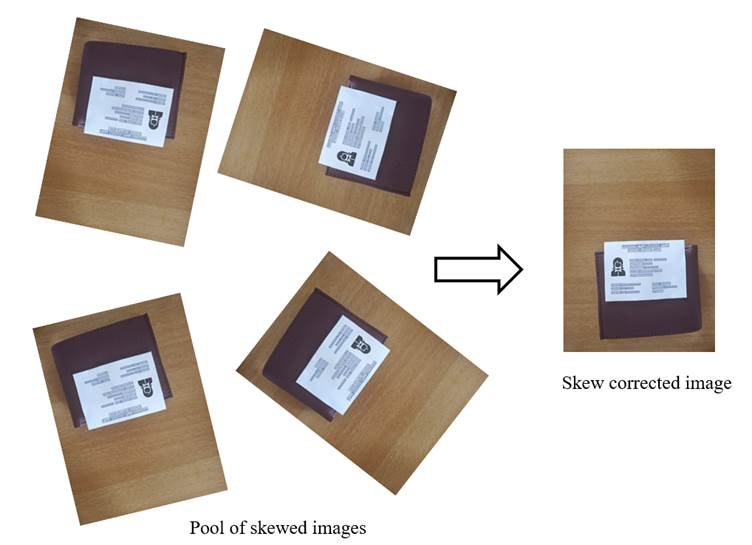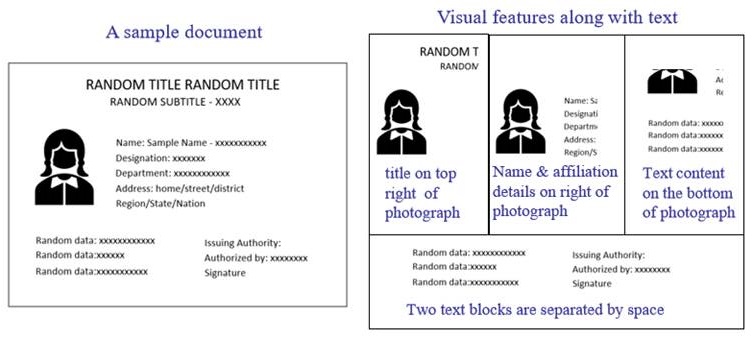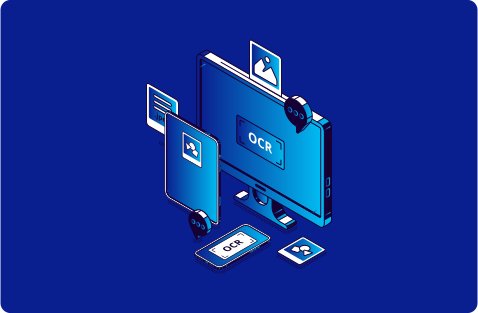With the speed of technological advancements, one term is ubiquitous, Artificial Intelligence. Across various fields, AI is changing how we look at current technologies. One technology transformed with the implementation of AI is OCR, Optical Character Recognition.
OCR can process images of text and convert them into a machine-readable format. It can take handwriting and printed documents and convert them into a digital format. Whether it’s digital onboarding or eKYC verification, AI-based OCR has become indispensable.
With AI-powered OCR tools, data capturing becomes easier when compared to regular OCR. In the real world, AI-based OCR tools can check for mistakes in grammar and punctuation. The provided output is accurate to the physical document. Here, the AI also corrects any errors found in the source document. This changes how people approach OCR tools, from a simple tool for basic translations to using OCR for authenticating users. OCR tools can also improve user experience moving from the physical to the digital space.a
How AI based OCR Works – Intelligent Data Extraction
Traditional OCR takes a source image or document, scans it, and provides a text-based digital output. When it comes to accuracy, it varies depending on the tool that is being used. Advanced OCR tools sit at around 98% accuracy, while raw OCR tools tend to be around 71% accurate.
While these numbers are fairly accurate, IDcentral’s AI-based OCR takes this implementation to another level with an accuracy of 98.6%. Let’s take a look at how AI-based OCR works in the real world based on current implementations.
1. Card Detection
Through the use of AI-based OCR tools, the scanned card will only show the card details without any background noise or logos. This enables businesses to accurately scan and verify cards.
2. Line Detection
Line detection is finding out which texts in a document are bound in specific margins and lines. This helps separate information in the printed document that won’t relate to each other. They could even belong in different contexts altogether.
Using line detection, OCR separates different newspaper articles separating without errors or mix-ups. OCR is also used to remove any irrelevant data such as advertising content.
3. Character Extraction
Character extraction is often used with handwriting, where the tool identifies each character. Post identification, OCR maps it to a relevant letter or character in the alphabet. Bundling these characters together creates their concerned words and phrases. The tool groups characters together and classifies them based on pronunciation, how they’re spaced, etc. Character extraction makes it easy to understand handwriting that’s unreadable to humans.
4. Post-Processing
As accurate as intelligent data models can be, there is always a chance of error. Post-processing takes collected data and checks further for errors made by the AI-based OCR tool.
Now that we know its applications, let’s look at some real-world applications of AI-based OCR.
Business Applications of AI based Data Extraction
Combining OCR with AI technologies, businesses can use machines to convert text. OCR is also used to check for errors that occur during conversion. Also, AI can detect whether a document is real or forged based on given parameters. This can help in detecting and preventing fraud before it makes a negative impact on businesses.
Retail
In retail, OCR systems extract information from Bills of Lading, invoices, and buy orders. OCR Systems can also generate invoices when paired with automated invoicing systems.
Banking
In banking, onboarding customers has involved a lot of manual forms to get information from users. AI-based OCR can take those forms and convert them into a digital format for digital KYC checks. AI-based OCR is also used to provide customer data verification and identity verification. This staves off attempts at fraud and forgeries.
Finance
AI-based OCR can detect handwriting, verify documents, and catch attempts at forgeries and fraud. This can help finance teams assist in catching fraud attempts much faster than what would be possible through manual means.
AI-based OCR digital onboarding solutions provide address validation, and identity verification. These make AI-based OCR popular eKYC solutions for banks.
Insurance
AI-based OCR digitizes physical forms and claims and runs automated checks to root out fraudulent claims. Digital KYC verifications improve the customer onboarding experience and how data collection happens.
How IDcentral’s AI based Data Extraction Solution
360-Degree Skew Correction
Often when users upload documents for OCR, they aren’t aligned properly. They also have unwanted objects in the background or poor image quality. Some images may also have a distorted perspective of the image. Traditional OCR solutions struggle to read and understand what’s in these images. Digitizing these documents becomes a difficult task for traditional OCR tools, as they aren’t designed to read through unclear or skewed images. Providing such images leads to errors in the final output.
IDcentral’s patented algorithm allows for seamless correction of image skew in any image produced for the tool. This skew correction is crucial to ensure performance on the tasks along the way, such as text extraction, OCR, etc. IDcentral’s deep learning modules can correct any kind of skew from any angle, as you can see below.

Joint Learning of Visuals and Texts
Joint learning of visuals and texts allows OCR technology to focus on the text information in an image. But besides textual information on documents, there are other details often ignored by competing OCR models. When you take an ID card, you will have a set of different text boxes, such as a different section for name, address, office details, affiliation, etc.
Using deep learning algorithms, IDcentral can learn to read the textual and visual features at the same time. The algorithms exploit the document structure. This lets them categorize information so it makes logical sense. This provides an output that’s not only of greater quality, but provides better accuracy as well.

Conclusion
When it comes to AI-based OCR, the implementations have not only proven to be promising but have also provided real-world business uses that make them feasible in the real world. But this is only the beginning, with solutions like IDcentral and its continuous progress in the AI field, we can expect to see some promising and useful implementations of AI-based OCR.
When it comes to AI-based OCR, the implementations have not only proven to be promising but have also provided real-world business uses that make them feasible in the real world. But this is only the beginning, with solutions like IDcentral and its continuous progress in the AI field, we can expect to see some promising and useful implementations of AI-based OCR.
If you are on the search for an OCR solution, give IDcentral a try
Request a Demo for 3 Months Free Trail

Sushanta Mishra is Associate Director at IDcentral. He has around 14 Years of experience in Banking, Insurance & B2B industry. He has worked on numerous transformational projects across Machine Learning & Deep Learning.
